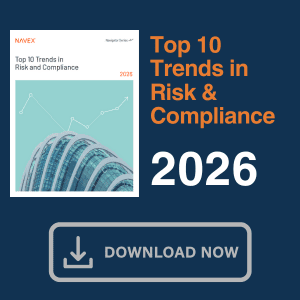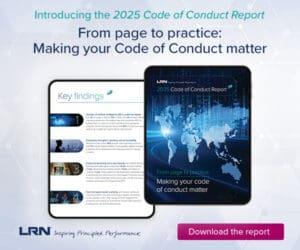Third-party risk is increasingly complex; the number of third parties used by companies has seen an exponential increase over the past few years, with some organizations routinely managing over 50,000 third parties around the world. Companies that do not rapidly evolve their third-party risk programs will have difficulty remaining competitive, says Gartner’s Antonia Donaldson.
As global regulators and stakeholders intensify their scrutiny of third-party risk management (TPRM), compliance professionals face mounting pressure to demonstrate robust, effective programs. Recent guidance from regulatory authorities such as the DOJ and SEC underscores the need for risk-based due diligence and clear business rationale when engaging third parties.
With additional requirements in Europe, organizations must ensure their TPRM programs are not only comprehensive but also documented and defensible.
Compliance teams should follow five sequential steps to implement and scale a comprehensive TPRM program:
Step 1: Evaluate the maturity of your TPRM program
Understanding your organization’s current TPRM maturity is foundational, because it helps compliance leaders and their business stakeholders understand where they stand and what gaps must be addressed. A maturity assessment should cover the program’s structure, the effectiveness of existing processes and alignment with recognized frameworks and best practices.
Map current third-party risk activities. Are you conducting risk-based due diligence? Is there a clear rationale for each third-party engagement, and do you understand the qualifications and associations of your vendors?
Aim toward a mature TPRM program that features centralized oversight, regular reviews and a risk-based approach aligned with the organization’s risk appetite, incorporating clear escalation criteria for higher-risk third parties and ensures ready access to reliable third-party risk data.
Step 2: Develop a TPRM governance model
Effective TPRM governance can be achieved via a centralized TPRM office or an oversight committee with representation from legal, compliance, finance, IT, cybersecurity, procurement and audit functions to ensure comprehensive oversight of the TPRM life cycle.
Clarity of third-party risk roles and responsibilities is crucial. Gartner’s research shows that only about half of organizations currently provide this, leading to confusion, redundancy and inefficiency. Upfront due diligence and ongoing third-party risk identification must be clearly assigned, with escalation protocols in place for addressing higher-risk relationships.
Step 3: Understand the entire TPRM life cycle
Managing third-party risk is a continuous process that spans the entire life cycle of third-party relationships.
When onboarding new third parties, organizations must conduct risk-based screening and due diligence, tailoring the depth of review to the risk profile of each third party. Once engaged, third parties should be subject to regular monitoring, including periodic reviews and recertification.
It is vital to recognize and document the necessary steps each function must undertake to mitigate third-party risk. This alignment not only reduces process frustrations and inefficiency but also ensures that the organization is proactive rather than reactive in its third-party risk management.
Understanding the life cycle also means maintaining comprehensive documentation of all related activities — risk assessments, due diligence reports, risk tiering rationale and remediation. This documentation may be essential in the event of an audit and will help to support the defensibility of the TPRM program.
Step 4: Leverage and implement TPRM technology
As third-party ecosystems expand and become increasingly complex, tracking third parties using spreadsheets, emails and questionnaire responses quickly becomes unsustainable. TPRM technology is a critical enabler for scaling TPRM programs, improving efficiency, consistency and visibility of third-party data.
TPRM technology platforms allow organizations to manage vendor data, workflows, assessments and documentation in one place. Integration with procurement, supply chain, contract management and GRC systems improves cross-functional third-party data visibility. TPRM technology adoption must be strategic and well-planned. Organizations should identify opportunities for TPRM process automation and improvement.
Step 5: Ensure the TPRM program is documented and defensible
The final step is to ensure that your TPRM program is thoroughly documented and defensible. Regulators and enforcement agencies expect organizations to demonstrate not only that they have policies and procedures in place but also that these are followed in practice.
Comprehensive documentation may include a TPRM governance framework, risk assessments, due diligence reports, monitoring activities, incident management protocols and regular program reviews delivered to an oversight committee. Defensibility also means regular program evaluation and adaptation. Organizations should stay abreast of regulatory changes and adapt their TPRM programs accordingly.




 Antonia Donaldson, JD, is a director analyst at the Gartner assurance practice focused on supporting legal and compliance leaders; she provides advice, analysis and resources to support critical business priorities. Antonia collaborates with assurance leaders to review, evaluate and understand strategies, plans, core risk areas and associated frameworks. With 18 years of corporate in-house experience, she assists assurance executives in addressing challenges related to a variety of compliance risk areas.
Antonia Donaldson, JD, is a director analyst at the Gartner assurance practice focused on supporting legal and compliance leaders; she provides advice, analysis and resources to support critical business priorities. Antonia collaborates with assurance leaders to review, evaluate and understand strategies, plans, core risk areas and associated frameworks. With 18 years of corporate in-house experience, she assists assurance executives in addressing challenges related to a variety of compliance risk areas. 






